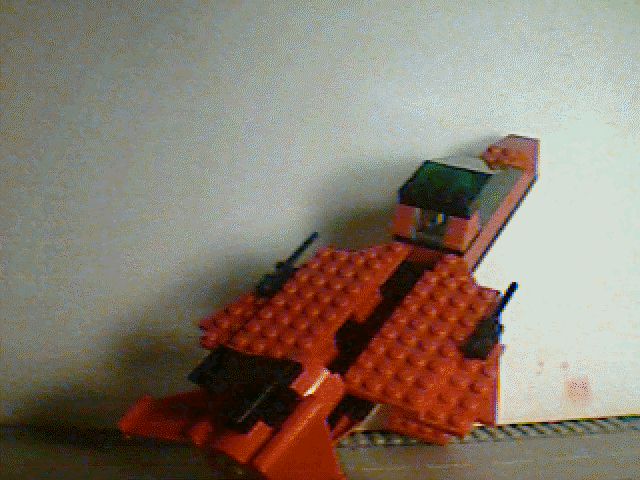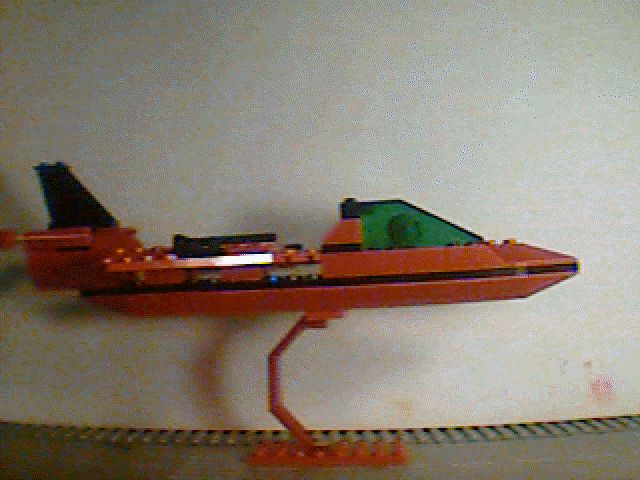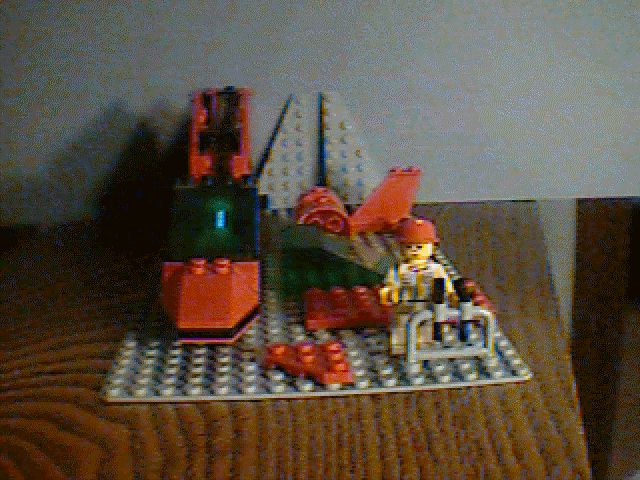The Sparrow Light Fighter
 On paper, the Sparrow's statistics don't suggest why it has become one of the most successful fighters in colonized space. It's manueverability is good, but not spectacular. With but a single engine, it accelerates more like a bomber than a fighter. It's armanent is laughably light, requiring good aim to hit vulnerable parts of the enemy. But despite these flaws, the Sparrow is the most common fighter in colonized space.
On paper, the Sparrow's statistics don't suggest why it has become one of the most successful fighters in colonized space. It's manueverability is good, but not spectacular. With but a single engine, it accelerates more like a bomber than a fighter. It's armanent is laughably light, requiring good aim to hit vulnerable parts of the enemy. But despite these flaws, the Sparrow is the most common fighter in colonized space.
To understand this, you must go back a few decades, when the Admiralty was dealing with a change in their roles. The Admiralty realized that there was a greater need for more, smaller forces to deal with many low level conflicts; miner's revolts, pirates, colonial insurrections and ethnic conflicts. To spread out their influence, the Assault Carrier was proposed.
 The Assault Carrier would be a relatively small, self contained ship capable of putting a squad of Marines with armor on site, with accompanying sky cover. It would operate far from establisyed Naval bases and would need to be as self sufficient as possible. The marines and sky cover should be able to remain effective with no additional supplies for up to a year of light combat.
The Assault Carrier would be a relatively small, self contained ship capable of putting a squad of Marines with armor on site, with accompanying sky cover. It would operate far from establisyed Naval bases and would need to be as self sufficient as possible. The marines and sky cover should be able to remain effective with no additional supplies for up to a year of light combat.
Since a typical carrier's spacecraft repair bay would be larger than the entire Assault Carrier's flight deck, the vehicles carried by the Assault Carrier had to be simple to maintain. The design of the Sparrow is modular, maintenance and repair consists of replacing damaged parts, diagnosed with the aid of a simple handheld computer. So easy, a grade 3 tech can do it. Longer term maintenance just means storing more modules.
 When folded, the Sparrow is only 4 studs wide. The wings can be automatically folded or unfolded in flight, making the Sparrow suitable for 4 wide launch tubes.
When folded, the Sparrow is only 4 studs wide. The wings can be automatically folded or unfolded in flight, making the Sparrow suitable for 4 wide launch tubes.
Once the sparrow became available, people realized it's design principles made it useful for many other applications. A destroyer or cruiser could fit two Sparrows and spare modules in a bay designed for a ship's cutter. A destroyer or cruiser would give up a little extra transport for greater reconnaissance and a little added firepower. With the modular design, a Grade 3 ship's boat tech would be sufficient to maintain the Sparrows. To the left you can see a Sparrow with a typical assortment of spare modules, wings, engine, laser cannon and canopy.
A remote base or a second class planetary defense force could afford two sqadrons of Sparrows for the price of four heavy fighters and the base needed to maintain them. So, mining bases, young colonies, isolated Naval depots and remote asteroid bases typically defened themselves with a squadron or two of Sparrows.
Sparrow Tactics
Since the Sparrow has been in service for several decades, a body of proven tactics has been developed for it. In a nutshell, the tactics stress practice, and teamwork. More so than heavier armed fighters, skill is needed to survive in a Sparrow.
Because the Sparrow's dual laser's are weak compared to most fighter armanent, gunner accuracy is essential for success. Dedicated pilots will practice their gunner skills several times a week, a popular game of skill is to see who can hit the most dinner plates of 10 in a row. Another game of skill is rock drilling, seeing how many times you can hit the same laser bored hole. Obviously, these games are done at high speed.
Teamwork is also essential, since almost any other fighter is equal to two Sparrows. But if the two Sparrows are piloted by pilots who have long trained together, put your money on the Sparrows. Sparrow pilot training places an emphasis on synchronized manuevers designed to lead enemies under the guns of their flight mates. On example is the run away move, where four Sparrows meet a pair of lesser trained pilots in heavier fighters. A pair of the Sparrows fill fly away, seemingly at random, while the second pair engages the fighters, then also tries to flee. When done right, the second pair leads the enemy fighters in a looping, confusing path under the guns of the sfirst pair.
It's a tribute to a pilots skill when they have survived a long time flying a Sparrow, and one should think twice before engaging a pilot with substantial Sparrow experience. THey didn't get that experience by flying poorly
Return to the space page.
Return to my Lego Links page.
Return to my home page.
 The Assault Carrier would be a relatively small, self contained ship capable of putting a squad of Marines with armor on site, with accompanying sky cover. It would operate far from establisyed Naval bases and would need to be as self sufficient as possible. The marines and sky cover should be able to remain effective with no additional supplies for up to a year of light combat.
The Assault Carrier would be a relatively small, self contained ship capable of putting a squad of Marines with armor on site, with accompanying sky cover. It would operate far from establisyed Naval bases and would need to be as self sufficient as possible. The marines and sky cover should be able to remain effective with no additional supplies for up to a year of light combat.
 On paper, the Sparrow's statistics don't suggest why it has become one of the most successful fighters in colonized space. It's manueverability is good, but not spectacular. With but a single engine, it accelerates more like a bomber than a fighter. It's armanent is laughably light, requiring good aim to hit vulnerable parts of the enemy. But despite these flaws, the Sparrow is the most common fighter in colonized space.
On paper, the Sparrow's statistics don't suggest why it has become one of the most successful fighters in colonized space. It's manueverability is good, but not spectacular. With but a single engine, it accelerates more like a bomber than a fighter. It's armanent is laughably light, requiring good aim to hit vulnerable parts of the enemy. But despite these flaws, the Sparrow is the most common fighter in colonized space.
